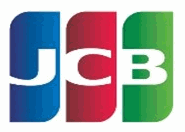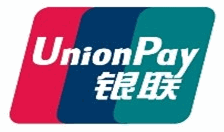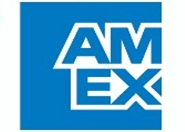How to open a high risk merchant account for your high risk business - e-Commerce Edition

Requirements For Opening A High Risk Merchant Account
The first step would be to establish a legal business entity. Most people will go for either a corporation or a limited liability company. Once you establish your legal business entity, you’ll need a copy of your certificate of incorporation and sometimes you’ll need a copy of your articles of incorporation.
The next step is establishing a federal tax identification number (TIN), which can be done fairly easily on the Internal Revenue Service’s website. After answering a few questions and providing your address and other information, you will be issued a nine-digit federal tax identification number printed on a form letter, commonly referred to as the “SS-4.”
The next step is to take your certificate of incorporation, articles of incorporation, and IRS letter SS-4 and find a bank who is either friendly, or indifferent, to your business type; not every bank is adult friendly. The process of opening a business bank account is very straight-forward and easy to do. In addition to your certificate of incorporation and articles of incorporation, you’ll need your photo ID, proof of address (like a utility bill or lease agreement), and an opening deposit, which varies by bank. If you’re in a hurry to setup your high risk merchant account and don’t have time, or don’t want to wait for your new checks for your new account to come in the mail, once the account is open, you can ask your banker for a letter of verification. The reason you need a letter, if you’re not going to wait for your checks to come in the mail, is because one of the documents you need to setup your high risk merchant account is an imprinted voided check, a starter check won’t work. The reason for this is because the high risk merchant processor needs to conduct their due diligence on the application and make sure that the name on the high risk merchant application matches the name on the bank account where the proceeds from sales through your high risk merchant account are going to occur. If you’re not going to wait for your voided checks and you ask for a letter from the bank, the letter must meet the following conditions: The letter must be typed, on bank letterhead, signed by a bank representative, contain the name on the bank account (which should be the name of the legal business entity), the account number, and the bank’s routing number to receive ACH deposits and debit requests. If you’re going to wait for your checks to come in the mail, you don’t need a bank letter.
Prepare Your Website For A Merchant Account
Assuming you already have a website established, be sure to update your terms and conditions, privacy policy, and whois information to reflect the name of your legal business entity. The whois information can be private, of course, but proof of domain ownership will need to accompany the high risk merchant account application. The domain should be owned by either an individual who is also an owner of the applying company or the applying company itself. In addition to providing the domain name, you will also need to supply a permanent user name and password for the bank to access the member’s content for the life of the merchant account. This part is important because the bank will conduct periodic reviews of your website to ensure that the website is compliant with the bank’s policies as well as Visa and MasterCard’s best practices. These compliance requirements are fairly straight forward and easy to maintain.
Now that you have your legal business entity and bank account established, the next step is completing the application for your high risk merchant account.
The high risk merchant account application is pretty straight forward and asks for basic information. The name and address of the legal entity, which must be a physical location. Most banks will not allow a PO Box, or other mail receiving service to be listed as the physical or legal location. PO Boxes and mail receiving services are okay for receiving mail, though! If you don’t have a physical location and work from home, listing your home address as the legal physical address is permissible. You’ll also need to provide your federal tax identification number. The rest of the application is information about the owners of the company, such as first and last name, date of birth, social security number, home address, phone number, and sometimes an e-mail address.
After that, typically will come the pricing on your account which varies by bank, processor, and business type. After the pricing, there are a few different places for the owner, or duly authorized representative of your legal business entity, to sign. The different signature lines are often attesting to the fact that the information you’ve entered on the application is true and correct, another signature accepting the terms and conditions of the bank, and another signature for the personal guarantee of the financial responsibility and obligations of the high risk merchant account.
Once the merchant application is complete and signed, it, along with your supporting business documents mentioned earlier (articles of incorporation, certificate of incorporation, Internal Revenue Service SS-4 letter, bank letter or voided check) and a copy of the signer’s photo ID is put together to form a high risk merchant account application package.
If you’re already established and currently have a merchant account, or have had one in the past, three months of processing statements are required to accompany the aforementioned documents.
Once everything is packaged and submitted to the bank, it goes through an underwriting process where the website is reviewed for compliance and the supporting documents are reviewed and an assessment of financial solvency is made with the help of third-party information verification services such as LexisNexis and Equifax.
When the decision to approve the application has been made, assuming there have been no requests for additional information and the verification and underwriting process goes smoothly, typically no more than three business days have elapsed. Once the approval is given, the application is sent to Visa and MasterCard for registration. The registration process for high risk merchant accounts is the longest part of the approval process and takes at minimum, two weeks, or ten business days, to complete. Once the registration with both Visa and MasterCard is confirmed, the processor will issue a document called a “Value Added Reseller” setup sheet or simply a “VAR.”
Integrating Your High Risk Payment Gateway
With this value added reseller setup sheet, you send this to your high risk payment gateway for integration. The value added reseller sheet contains account numbers and high risk payment gateway configuration parameters that are typically entered into the high risk payment gateway account by your high risk payment gateway provider. Before or during this step is a good time to integrate your shopping cart or website to communication with the high risk payment gateway, which is typically done via application program interface, or API.
Once your high risk payment gateway provider has inputted the information contained on your value added reseller setup sheet and your website has been integrated, you can begin processing sales!
Before processing sales, however, it is highly recommended to run a test transaction to ensure a few things. The first thing you want to confirm is how your descriptors appear. Yes, descriptors, plural. There are two descriptors when it comes to credit card processing. The authorization descriptor, which is what appears immediately after a transaction is successfully authorized, and a settlement descriptor, which is what appears a day or two after the successful authorization is settled. The descriptor is how your customers will identify and recognize a transaction they placed so it’s very important to clearly indicate what your billing descriptor is during your customer’s checkout process. Something like, “This transaction will be billed as xyz.com 800-555-1212” is best. If you show a short URL and a phone number on the descriptor, it gives your customer two methods of reaching you, should they have any questions or concerns regarding their transaction. Be careful, however, most descriptors are limited to 22 characters, including spaces, so you may have to get a little creative. Due to the fact that the authorization descriptor and settlement descriptor can be different, you’ll need to run a test transaction and let it settle in order to review both versions. Most people will run a transaction for a small amount, typically $1.00 or less, in order to verify the descriptor appears the way you want it to.
Once the descriptor is verified and appears the way you want it to, you can start processing sales through your high risk merchant account immediately!
The process may seem long and arduous, and it can be, but with a good high risk merchant account provider on your side, they’ll do most of the heavy lifting and provide you with all the information you need to know in order to get setup with the least amount of effort and headaches possible.
Return to Blog









* Created by
